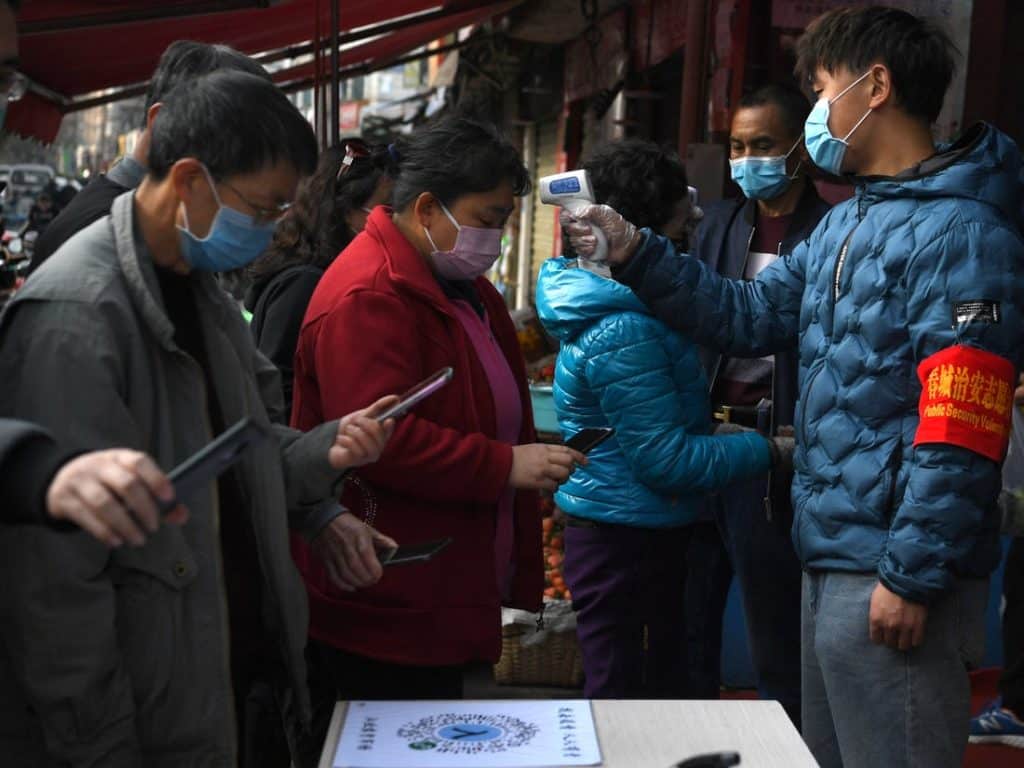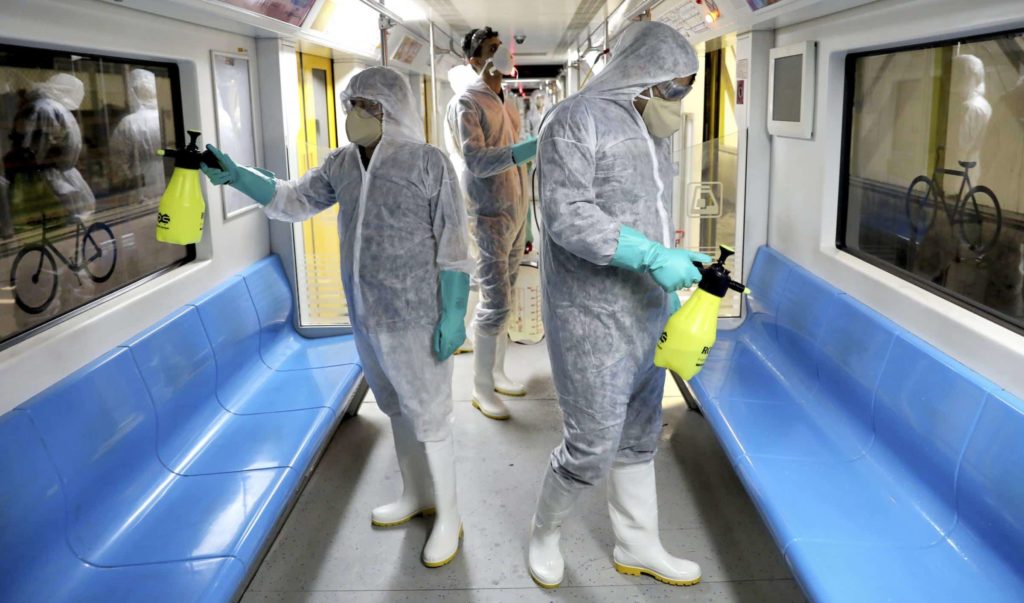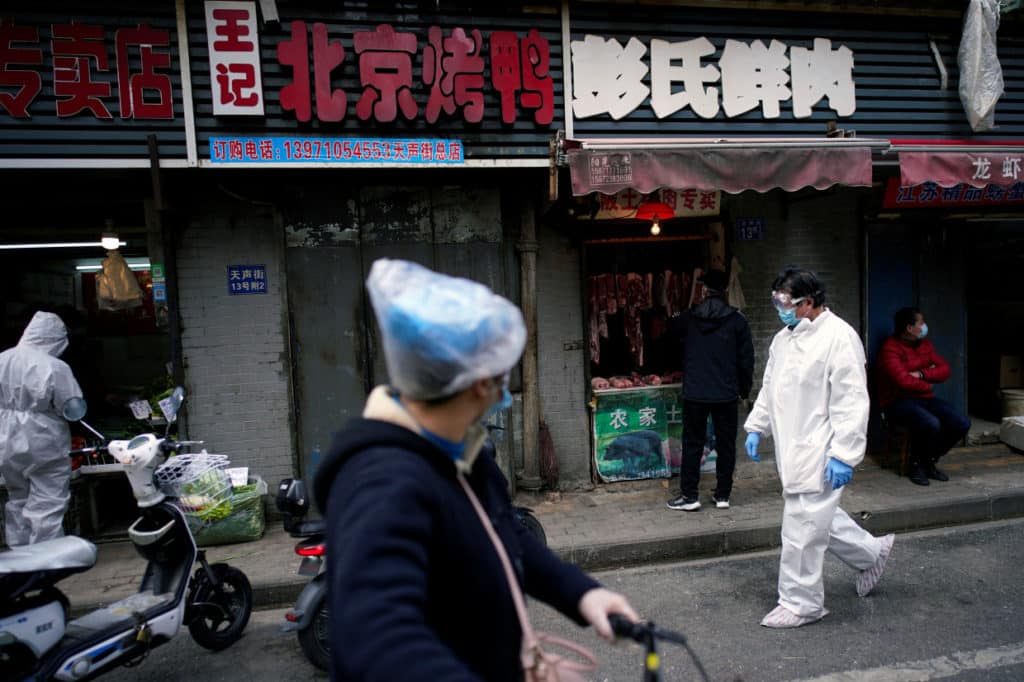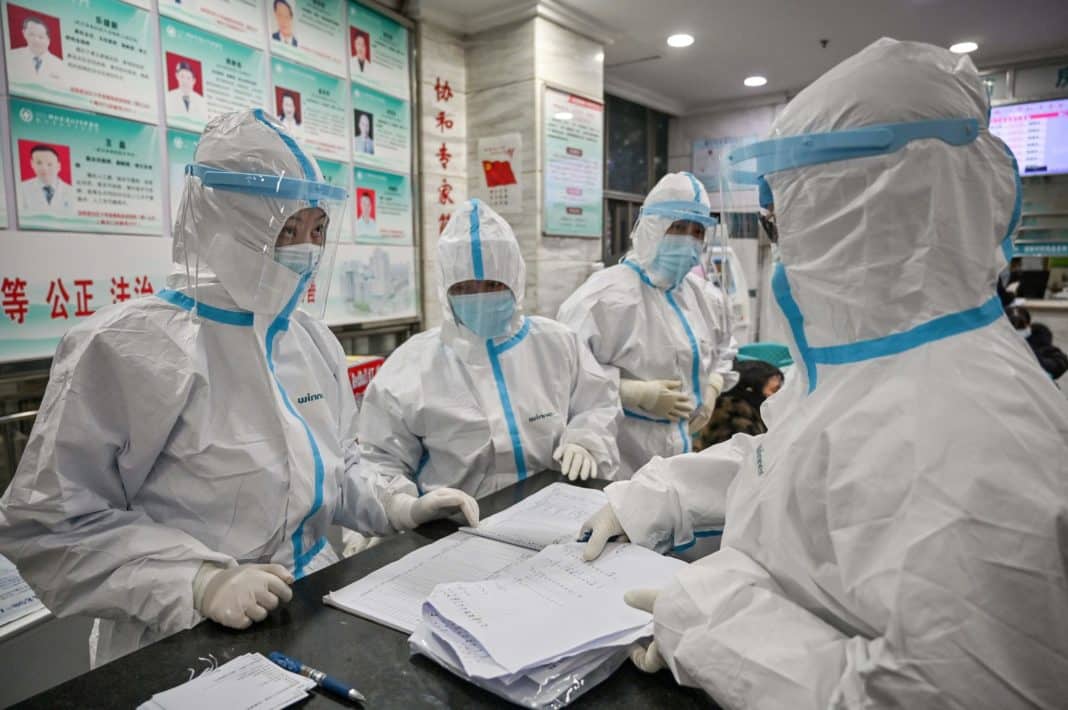Cases of COVID-19 in China have risen by 108, largest rise in five weeks as experts fear a second wave of the virus.
The increases of 108 cases were reported on Sunday, up from 99 a day earlier with 98 of the cases said to have entered from outside the country.
More than 90% of those infected entered the country from abroad after China recently lifted travel restrictions last week.
The Chinese National Health Commission said in a statement on Monday that mainland China reported 98 new cases that had been ‘imported’ from other nations, a record high and up from 97 a day earlier, with another 61 new asymptomatic patients.
Asymptomatic cases are a big worry across the globe, with Iceland saying that 50% of those who tested positive, were asymptomatic (showing no symptoms) after their groundbreaking amount of testing.
The total number of confirmed cases of infection in mainland China now stands at 82,160 cases, while the death toll rose by just two to 3,341 fatalities in the country.
Both of those new deaths were recorded in the former epicentre city of Wuhan, not long after China lifted the lockdown on the city, including resuming flights to and from the area.
Since the outbreak originated in the Chinese city of Wuhan in late December last year, China has largely stopped the spread of the disease.
On the worst day of the coronavirus outbreak in China, on the 12th of February, there were over 15,000 new cases of infection recorded in 24 hours.
This month China has been slowly easing curbs on movement in order to get the economy of the nation back on track, but there are now fears that a rise in cases imported from other nations could spark a second wave of the COVID-19 pandemic in the country.

Of the 108 new cases, 98 of those were cases were from people entering from abroad and 50% of those were Chinese nationals returning from Russia’s Far Eastern Federal District.
Confirmed cases of infection of COVID-19 in the neighbouring country of Russia has climbed to 18,400, as the nation become the new frontline in the fight against a resurgence of the coronavirus epidemic in China.
The border to Russia is currently closed, except to Chinese nationals who are crossing into the province of Heilongjiang.
Chinese cities close to the Russian border have already said on Sunday that they will begin to tighten their border controls and quarantine measures on arrivals.
Over 90% of those infected have entered China from abroad, with the north-eastern border of Russia believing to be the access point for the virus. This route is one of the few options available for people trying to return home after Russia stopped flights from China except for evacuations.

Chinese cities near the Russian frontier have already strengthened border controls and applied stricter quarantines to try and put a stop to imported cases of coronavirus.
Suifenhe and Harbin, the capital of Heilongjiang, the only province that Chinese nationals returning from Russia can enter, has now mandated 28 days of quarantine as well as nucleic acid and antibody testing for all arrivals.
Authorities in Suifenhe are said to be taking similar measures to Wuhan, the Chinese city where the virus first emerged, in order to prevent a second wave of infections.
It has been reported that many residents have left the city for fear of becoming infected, whereas others have put their faith in the containment measures put in place by the authorities and do not believe that they are at risk.
One resident, Zhao Wei, has said: “I don’t need to worry. If there’s a local transmission, I would, but there’s not a single one. They’re all from the border, but they’ve all been sent to quarantine.”

Russia is currently experiencing its own surge in infections, reporting more than 2,000 new cases on Sunday, the country’s biggest daily spike to date. Anastasia Rakova, a deputy mayor responsible for heath, has revealed that the number of people hospitalised with illnesses relating to the virus in Moscow has more than doubled in the past week.
The city’s mayor, Sergei Sobyanin, has also vocalised his concerns, saying that the virus “is gaining momentum,” and the “situation is becoming increasingly problematic.”
China has now cut the number of people crossing its borders by 90% and has vowed to stop all non-essential journeys. Liu Haitao, an immigration official, has said:
“Our border is long, and apart from the border crossings and passages, there are a large number of mountain passages, paths ferry crossings and small roads, and the situation is very complicated.”

The increase in daily infections comes as China reported no coronavirus deaths on Tuesday for the first time since it started publishing its daily figures in January.
The total number of confirmed cases in mainland China as of Sunday was 82,160, with 3,341 people having died from the virus. However, the Chinese government is under scrutiny in regard to underreporting its figures.
Concerns over the premature relaxation of lockdown measures in China have been expressed by experts, with researchers at the University of Hong Kong saying: “Although the aggressive countermeasures appear to have reduced the number of reported cases, the absence of herd immunity against COVID-19 suggests that case counts could easily resurge when these interventions are relaxed.”
Use our handy Live global stats tool top do your own research on COVID-19 around the globe:
Recent posts
- Cabinet Minister Robert Jenrick Broke Lockdown Rules to Visit Parents 40 Miles Away
- Prime Minister’s Father Says Boris ‘Almost Took One for the Team’
- Foreign Office to Bring Back 3,000 Stranded UK Nationals From India
- Breakthrough in Trial Using Blood Plasma to Treat Coronavirus
- Boris Johnson Has Now Left ICU After 3 Days
